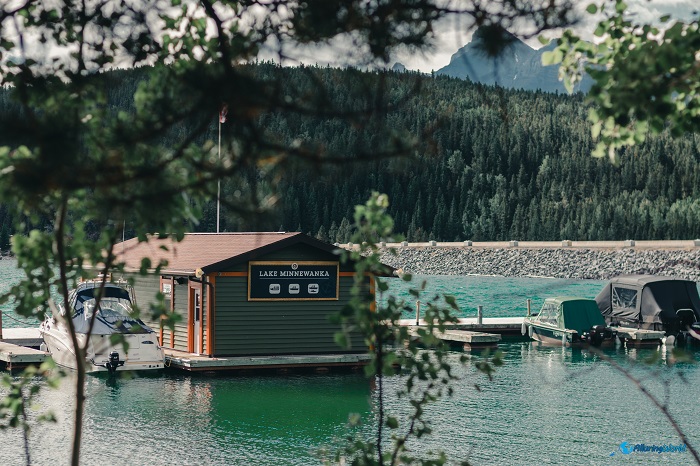Lake Minnewanka is a beautiful glacial lake which is located near the town of Banff, in the Canadian Rockies of the Province of Alberta, in the western part of Canada. As it is one of the largest lakes that can be found in the Banff National Park, it spans over 28 km (17 mi) and reaches depths of up to 100 m (328 ft).

The lake was formed around 13,000 years ago, during the last Ice Age, when the melting glaciers created the valleys and lakes of the Canadian Rockies, but the name “Minnewanka” comes from the language of the local Stoney Nakoda people, who called it “Minn-waki” meaning “Water of the Spirits.”

Still, as the lake holds significant cultural and historical importance for the native people of the region, the local Stoney Nakoda people have been using the lake for centuries as a source of food, water, and spiritual significance, where they believe that the lake is home to spirits and they hold it in high regard. In addition, the lake also holds great importance in their creation story, which describes how the lake was formed by a giant serpent that was defeated by a warrior.

Throughout history, the lake was left undiscovered by Western expeditions, and this was up until 1883 when the lake was discovered by a Canadian Pacific Railway worker named William McCardell, who was exploring the area for potential railway routes. Due to the immense beauty and mesmerizing landscape, the lake quickly gained popularity in the Western world, and by the early 1900s, it became a popular tourist destination.

Nowadays, Lake Minnewanka is a well-known attraction that draws thousands of visitors each year to experience its natural beauty and recreational opportunities, and its size of approximately 21 km (13 mi) in length, 142 m (466 ft) in depth, and spanning over 24 sq km (9 sq mi) is a perfect getaway place for people who would like to enjoy the amazing Canadian nature, but its impressive size and clear blue waters make it a breathtaking sight to behold.

Nevertheless, Lake Minnewanka is not only important for its beauty and cultural significance but also for its role in providing hydroelectric power to the region, in 1941, a dam was built at the eastern end of the lake to regulate the water levels and generate electricity for the area. Today, the lake continues to serve as an important source of renewable energy for the surrounding communities.

All of the people who are choosing to spend some time in this alluring place can partake in a variety of activities, including hiking, fishing, boating, and camping, and with the diverse range of fish species, such as lake trout, whitefish, and mountain whitefish, it is quite a popular destination for anglers.

Additionally, the lake’s serene waters also provide an ideal environment for boating and kayaking, which makes adventurous times will be a certainty for every single visitor.

In conclusion, Lake Minnewanka is a remarkable natural wonder that has captivated visitors for centuries, not just for its history, beauty, and recreational opportunities, but also for the importance it holds to the native people of the region and its role in providing renewable energy further emphasizing the importance of preserving and protecting this natural wonder for generations to come.




